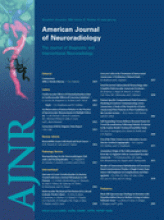M. Shaya, R. Nader, A. Nanda, eds. New York: Thieme: 2005. 229 pages, over 100 illustrations, $39.95.
This book is intended as a review tool to aid in studying for the written portion of the neurosurgery board certification examinations. It consists of 805 questions written in the formats used by the board examinations and covering the major subjects for which the examinee is responsible. The neurosurgical trainee is expected to develop strong backgrounds in neuroanatomy, neurophysiology, neuropathology, neurology, neuroradiology, pharmacology, and general medicine. The neurosurgical written board examination includes questions on all of these topics arranged in random order, and this book imitates that structure, with no division into chapters or topics. The questions are in multiple-choice format, with some questions grouped around a single set of possible answers. What is included in this book that does not accompany the actual examination is the answer set. The back part of the book provides answers to all of the questions, with some degree of explanation and justification of most answers. Many of these explanations are quite detailed while remaining succinct. The answers do not include references; those the reader would need to find on his or her own.
The coverage of the applicable subject areas is comprehensive. In the “Preface,” the first author explains that he was frustrated that there were no study questions he could use for examination preparation, so he created his own questions during his studies. The 805 questions included in the book were culled from his pool of over 2000 questions that he had developed as his own study aid. A “Foreword” by a prominent neurosurgical department chairman, Dr. Raymond Sawaya, describes the book as intending to “force the acquisition of factual knowledge and encourage the application of logic.” The book does fulfill that description of objectives.
Illustrations are a major component of the book and are as varied as the subject matter, including line diagrams, neuroimaging, histopathology slides, photographs of physical findings, and intraoperative photographs; there are more than 100 illustrations. The illustrations are in gray-scale and clear, in fact, more consistently clear than this reviewer remembers those on the actual written board examinations of years past. Many of the questions are illustrated with mostly well-printed neuroimaging. These include skull and spine radiographs, CT scans, MR images, radionuclide studies, and angiograms.
Anatomic questions cover vascular anatomy, cerebral and spinal anatomy, and peripheral nerve anatomy. Anatomic questions are presented with photographs, diagrams, and text alone. General medical questions tend to cover issues involved in the care of seriously ill neurosurgical patients. An example is a question asking what blood product is most appropriate for transfusion in a patient with Von Willebrand disease and traumatic hemorrhage. Some questions appropriately ask the examinee to bring different subjects together, for example, by showing a radiologic study of a tumor and asking about the source of the blood supply of the tumor. This is the type of synthesis of information required of the neurosurgical trainee and points out to the reader how to study the material and what types of questions to expect on the actual examination. As with the actual examination, it is difficult to be sure to which subject subscore some questions would be assigned.
Unfortunately, some clinical management questions are assigned answers that are presented as absolute, with explanations of rationale, when the correct answer could reasonably be debated. An example is the question that shows a small cerebral arteriovenous malformation in a superficial eloquent region of cortex in a patient who presents with a history of some degree of focal neurologic deficit, followed by an acute intracranial hemorrhage. The management option said to be correct is gamma knife treatment; however, many neurosurgeons would reasonably argue that surgical excision would be the best choice. The reader may also find it amusing and instructional to check for minor errors such as the answer choice printed “Foster-Kennedy syndrome.” The correct eponym is “Foster Kennedy,” without the hyphen; the name belongs to only 1 person.
As the authors intended, this book will be useful as either a study guide or as a practice test for trainees preparing for the written neurosurgical board examination. It is well done and can be recommended as a study tool for neurosurgical residents. The book is a convenient-sized paperback and could find a temporary home in a laboratory coat pocket for intermittent use in occasional downtime during a clinical day. We can infer that the collection of questions was beneficial to the first author’s studying. Practicing neurosurgeons currently have demanding requirements for continuing medical education and might use this book for review purposes and to scout for particular topics on which they need refresher work . It may also be of use to neuroradiologists or anyone else training in the clinical neurosciences. There are enough questions that involve neuroimaging that it may be of genuine interest to neuroradiologists. The questions involving neuroimaging are mostly framed with clinical correlations that will help the neuroradiologist to keep the 2-dimensional images in a 3D clinical context. Dr. Sawaya’s “Foreword” describes the book as a “practical teaching tool.” That is a fair assessment.
- Copyright © American Society of Neuroradiology












